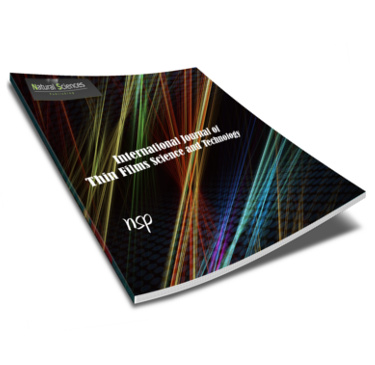International Journal of Thin Film Science and Technology

Abstract
L-cysteine has gained much attention as a versatile amino acid to create bioactive surfaces by assisting the bonding of proteins to metal surfaces. When L-cysteine interacts with metallic partners such as gold, silver and copper, the SH functional group is known to interact strongly with the metallic surface. The interaction of the L-cysteine with silver surfaces is particularly interesting because, L-cysteine adsorption on silver has been suggested to be stronger than on gold or copper surfaces and the interactions may strongly influence the formation of novel interface states of the L-cysteine-Ag interface. On the other hand, some studies report a weakening of silver-sulfur bond with increasing coverage. However, research has not been sufficiently addressed for experimental investigation to understand the interaction of L-cysteine with silver metallic surfaces. As the first step, we reported the results of experimental investigation of L-cysteine and silver interface electronic structure by thickness-dependent ultraviolet photoelectron spectroscopy (UPS) with a clear spectral feature in between Fermi edge and highest occupied molecular orbital (HOMO) of L-cysteine due to the formation of Ag-S bonding together with a weakening of the silver-sulfur bond with increasing of L-cysteine. In this study, the formation of Ag-S bond at the L-cysteine modified silver surface was systematically elucidated by X-ray photoelectron spectroscopy (XPS) for three different coverages, namely monolayer, two-layered and multi-layered. A prominent shoulder at 2475.2 eV of the main peak at 2473.2 eV was observed for the S 1s XPS spectrum for monolayer film, while only a single peak was observed in the case of two- layered and multi-layered. The spectral feature at 2475.2 eV can be attributed to the interaction of L-cysteine with silver. In addition, the disappearance of the spectral feature for the two-layered film can be attributed to the weakening of silver-sulfur bond by over layer of L-cysteine.
Recommended Citation
D. K. V. Maduwantha, G.; Janitha Liyanage, Chathudina; and Rasika Koswattage, Kaveenga
(2023)
"An XPS Study of the Ag-S interface of L-Cysteine Films on Silver Surface,"
International Journal of Thin Film Science and Technology: Vol. 12
:
Iss.
1
, PP -.
Available at:
https://digitalcommons.aaru.edu.jo/ijtfst/vol12/iss1/9

